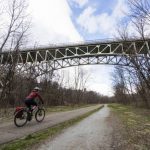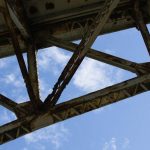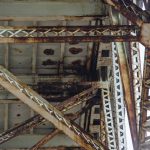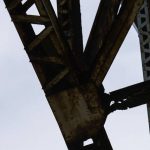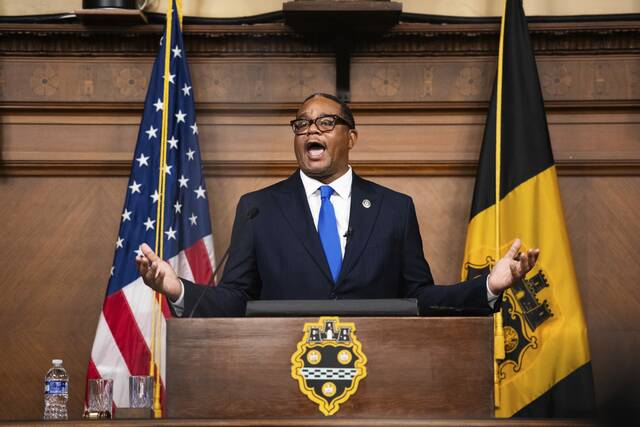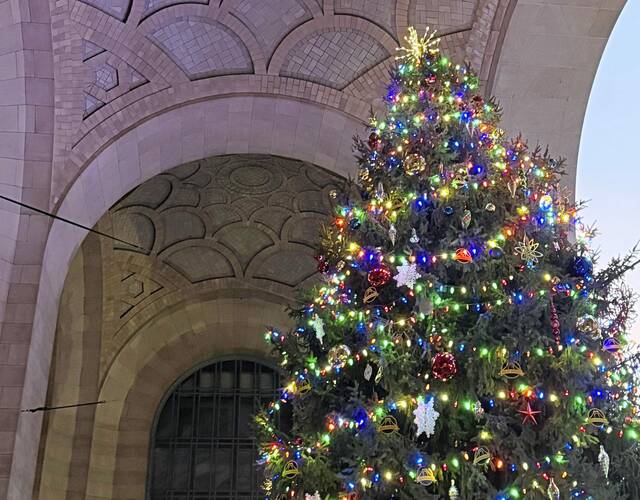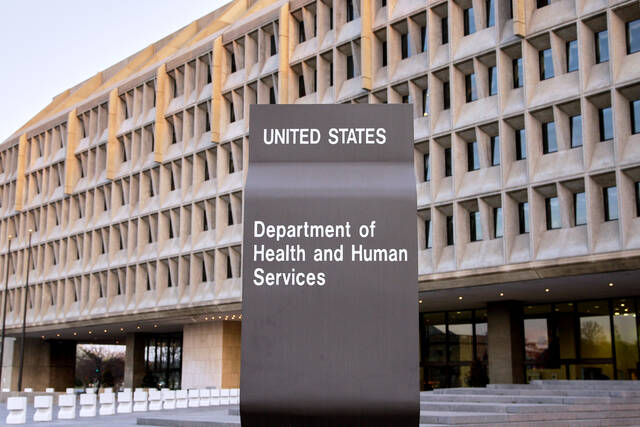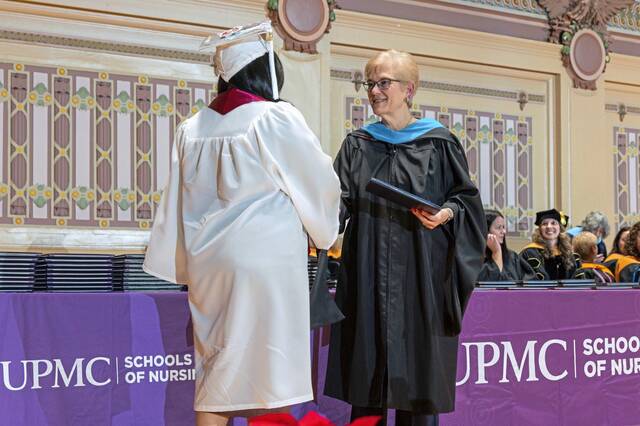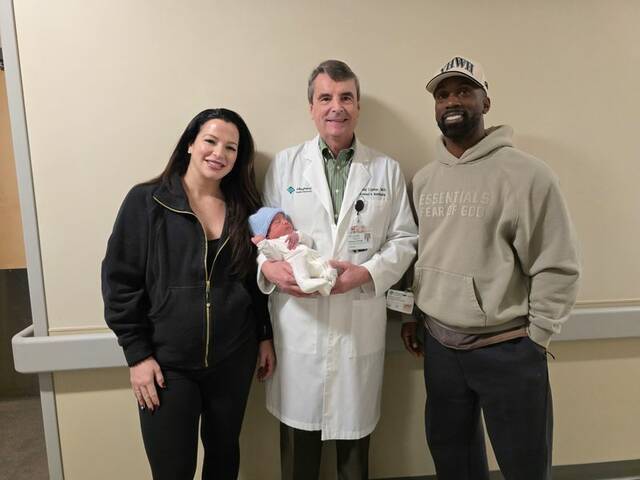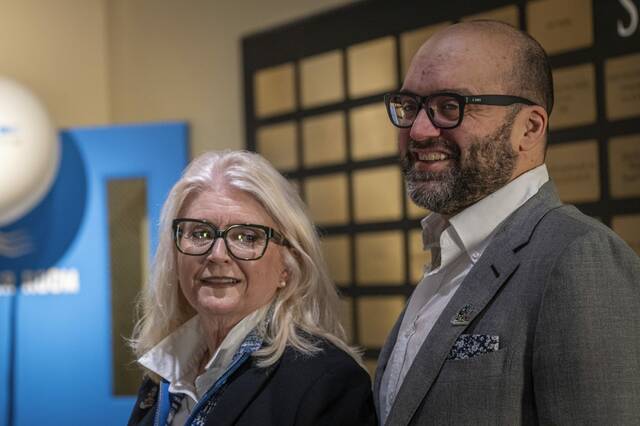Squirrel Hill resident William Markley lives just a few blocks away from the site of the Fern Hollow Bridge collapse in Pittsburgh. He is understandably concerned about the state of the region’s bridges.
During his daily commute to his case manager’s job at a recovery clinic in the North Side, he crosses the Charles Anderson Bridge in Oakland, which carries Boulevard of the Allies over Junction Hollow in Schenley Park.
Since the collapse of the Fern Hollow Bridge, Markley, 42, has been more concerned.
On a warm day, he decided to ride his bike to work, which took him on the Junction Hollow trail underneath the Anderson Bridge. Markley looked up and saw rusted struts. His worries grew when he spotted some deterioration and what looked like slight warping of the metal beams on the underside of the bridge.
“I don’t usually look up at bridges, but I live close to Fern Hollow, so that prompted me,” Markley said. “I am not an engineer, but there are clear cross members that are rusting through. There is a clear hole where beams used to be. It just spooked me out.”
However, unlike the Fern Hollow Bridge, officials have been aware of problems at the Anderson Bridge for some time, and it’s already in the early stages of rehabilitation.
Public meetings were held in 2019. Earlier this year, the city’s Department of Mobility and Infrastructure determined it is “both feasible and prudent to rehabilitate the historical bridge,” instead of tearing it down and rebuilding.
The bridge rehabilitation project is in the preliminary engineering phase with construction slated to begin in 2025, according to the city.
The Charles Anderson Bridge was built in 1938. It’s 780 feet long and is classified as a truss bridge with a concrete deck.
The bridge is inspected yearly and has a weight limit. It was last inspected in October, according to the city. According to PennDOT, it has been rated in “poor” condition since 2012.
In an inspection that took place in October 2018, it was recommended that the bridge be rehabbed “because of general structure deterioration or inadequate strength.”
The estimated cost of a rehabilitation in 2018 was estimated to be more than $16 million.
The October 2018 inspection was the first time that all three components of the bridge — the deck, the superstructure, and the substructure — were rated in poor condition. In 2016, the deck was rated fair, and in 2012 the substructure was rated fair, according to inspection records.
This precipitous decline in ratings has Markley fearful. Markley would like to see construction work begin before 2025.
“Think about how long the last three years have been,” said Markley.
Andrea Boykowycz, assistant director at the neighborhood group Oakland Planning and Development Corp., said Oakland residents are also concerned about just how quickly the bridge will be rehabbed.
“Oakland neighbors have been concerned about the state of the Anderson Bridge for many years now, and folks are eager to hear from (the city) when it can be repaired,” said Boykowycz.
Unlike the Fern Hollow Bridge, a state of emergency has not been declared for the Charles Anderson Bridge.
Pittsburgh City Councilman Corey O’Connor said the state of emergency is what enabled the process to replace the Fern Hollow Bridge to move faster than usual. Construction on Fern Hollow will begin this month, about three months after its collapse.
Without an emergency declared by the state for the Charles Anderson Bridge, it’s impossible to acquire the funding quickly enough to fix it quicker.
“We want them all to be done fast,” said O’Connor of the city’s many poorly rated bridges. “But the funding to do them at once is limited. At least there is a schedule for the (Charles Anderson Bridge).”
In March, the city created a commission to study and assess the state of the city’s bridges, roadways, and tunnels after passing a bill introduced by O’Connor, with support from Pittsburgh Mayor Ed Gainey.
O’Connor said the commission should help determine just how much more money can be allocated toward bridge repair, which could help speed up some bridge projects. But he also noted that it’s not just the Charles Anderson Bridge that needs repairs; for one, the city is also working to repair the Negley Avenue Bridge over the East Busway in Shadyside.
“We all want our bridges done as soon as possible, but we need to determine which ones need the work ASAP,” O’Connor said. “I am hopeful the mayor’s first budget this fall will have more money for infrastructure needs.”
For Markley, it’s just a new reality after the Fern Hollow Bridge collapse, and he will be looking at bridges and infrastructure in a much different way than before.
“If I would have seen that bridge before Fern Hollow, I would have thought, ‘Pittsburgh is so gritty,’ and then taken an artistic photo,” Markley said. “But now it is all different.”






